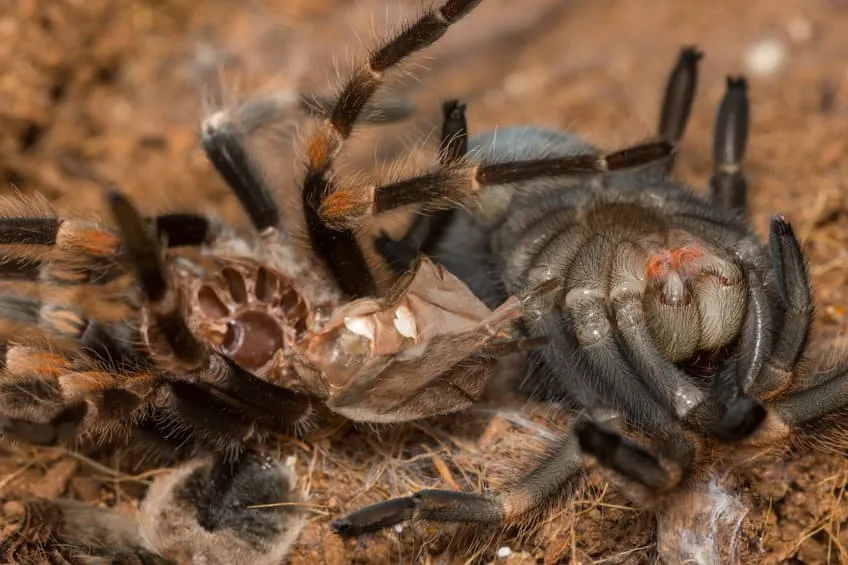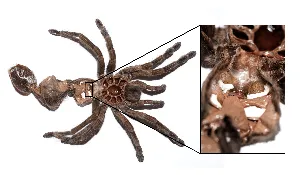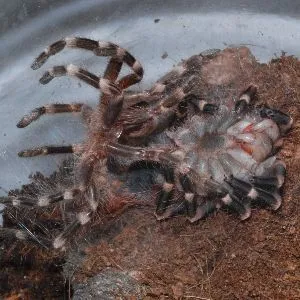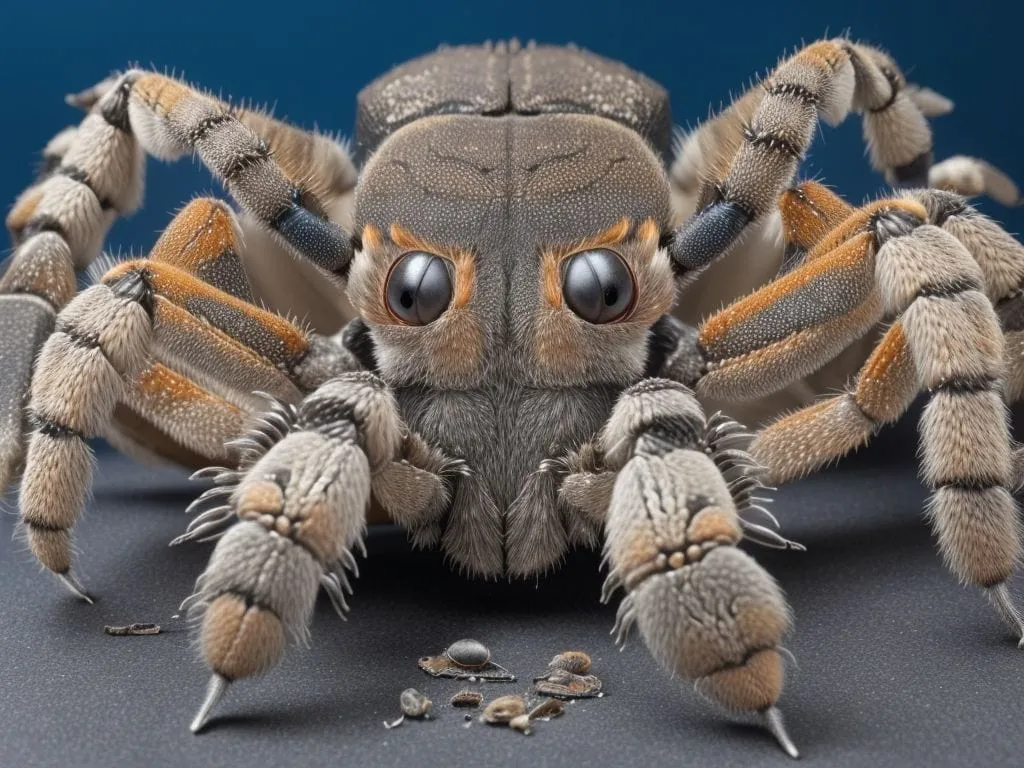What is Molting in Tarantulas?
Molting, also known as ecdysis, is a natural process that all tarantulas, like other arthropods, undergo to shed their exoskeleton and grow. This exoskeleton, made of chitin, doesn’t grow, so the tarantula must periodically shed it to allow for growth. This process is crucial for the tarantula’s development, as it allows them to increase in size and replace damaged or worn-out body parts. It is also a vulnerable time for the tarantula, as the new exoskeleton takes time to harden, leaving them defenseless against predators and susceptible to injury. Understanding the molting process is vital for any tarantula owner, as it helps to ensure the health and well-being of their pet.
How Often Do Tarantulas Molt?
The frequency of molting in tarantulas varies greatly depending on several factors, primarily age and growth rate. Younger tarantulas, especially spiderlings, molt much more frequently than adults. This is because they are growing rapidly and need to shed their exoskeletons to accommodate this growth. As tarantulas mature, the molting frequency decreases significantly. Adult tarantulas typically molt once a year or even less frequently, depending on their species, feeding habits, and other environmental factors. The molting process is a significant event in a tarantula’s life cycle, representing growth and the replacement of their outer layer.
Factors Influencing Molting Frequency

Several factors influence how often a tarantula molts. These factors can either speed up or slow down the process. The primary factor is age; younger tarantulas molt more frequently. Another key factor is the tarantula’s diet and how much they eat. A well-fed tarantula with ample food is more likely to grow quickly, leading to more frequent molting. The temperature and humidity of the enclosure also play a role, as the right environmental conditions can encourage growth. Any health problems or injuries can also impact the molting schedule, sometimes causing delays or complications.
Age and Molting
Age is the most significant factor determining molting frequency. Spiderlings, the youngest tarantulas, can molt every few weeks or months because they are growing at an accelerated rate. As the tarantula matures, the frequency of molting decreases. Sub-adults, still growing but at a slower pace, may molt every six months to a year. Adult tarantulas typically molt once a year or even less frequently. Male tarantulas often stop molting once they reach maturity, while females continue to molt, though at a slower rate, throughout their lives. The older the tarantula gets, the less frequently they will molt, indicating the slowing down of their growth.
Species of Tarantula and Molting
Different tarantula species have varying molting patterns. Fast-growing species, like some of the terrestrial tarantulas, may molt more frequently than slower-growing species, such as arboreal species. The size and the growth rate of the species determine how often they need to molt. Larger species generally take longer to reach maturity, which can affect their molting schedule. Some species are known for their quicker molting cycles when they are young. Understanding the molting habits specific to your tarantula species is essential to providing the best care and knowing what to expect during their development.
Growth Rate and Molting

The growth rate directly influences how often a tarantula molts. Tarantulas that eat well and grow rapidly will molt more often. A steady, nutritious diet provides the necessary building blocks for the new exoskeleton and overall growth. Faster growth usually means more frequent molting cycles. Ensuring your tarantula has access to food allows them to grow and, consequently, molt more frequently. This is especially true during their younger stages. The growth rate is a strong indicator of how often your tarantula will undergo the molting process throughout its life.
Environmental Factors and Molting
Environmental conditions also impact molting frequency. Maintaining the correct temperature and humidity levels in the enclosure is essential for a healthy tarantula. Optimal environmental conditions can encourage the tarantula to eat well and grow, which, in turn, affects the molting schedule. A comfortable and suitable environment will help them go through the molting process more smoothly. Substrates also play a role as they help to keep the humidity consistent. Proper environmental conditions support the tarantula’s overall well-being and contribute to the success of molting.
Signs Your Tarantula is About to Molt
Recognizing the signs that your tarantula is about to molt is crucial for providing proper care. One of the most common signs is a change in behavior, such as a loss of appetite and a tendency to hide more. The tarantula may become sluggish and less active than usual. Another visible sign is the darkening of the abdomen, indicating the new exoskeleton is forming. The tarantula may also start to build a web mat or seal itself in its burrow in preparation for molting. Being aware of these signs allows you to make the necessary adjustments to the enclosure and feeding schedule to ensure a safe molting process.
The Molting Process Step by Step

The molting process is a fascinating yet vulnerable period for tarantulas. It starts with the tarantula creating a safe space, often sealing itself in a burrow or web mat. The old exoskeleton begins to split open, usually along the carapace (the top part of the body). The tarantula then slowly wriggles out of its old skin, a process that can take several hours or even days, depending on the size of the tarantula. Once free, the tarantula is soft and fragile, with its new exoskeleton still hardening. It is essential to avoid disturbing the tarantula during this time to prevent injury or stress. Afterward, it will remain in hiding to harden fully.
What to Do During Molting
During the molting process, there are several important steps to take to ensure the tarantula’s safety. The most crucial thing is to avoid disturbing the tarantula. Refrain from handling or touching it. Also, ensure the enclosure is kept at the correct temperature and humidity levels. Do not feed the tarantula until its fangs and exoskeleton have fully hardened, typically about a week or two. Providing a shallow water dish is essential, but make sure it cannot easily tip over. Observe the tarantula closely, but do not interfere unless there is a clear problem, such as the tarantula getting stuck during the molting process.
Common Problems During Molting
While molting is a natural process, several problems can arise. Sometimes, the tarantula can get stuck in its old exoskeleton, which can be fatal. This can happen due to improper humidity levels or underlying health issues. Another common problem is the loss of limbs, which can occur if the tarantula is disturbed during molting. It is also possible for the tarantula to have problems with the new exoskeleton hardening properly. If you notice any of these issues, it is important to seek advice from an experienced tarantula keeper or a veterinarian with expertise in exotic pets. These issues may require intervention.
How to Help a Tarantula Molt Safely

While you cannot directly help a tarantula molt, you can create the optimal conditions for a successful molting process. Ensure the enclosure has the correct humidity levels, usually by misting the enclosure or adding a water dish. Maintain the proper temperature range for the specific tarantula species. Provide a substrate that allows the tarantula to burrow, which can help with the molting process. Avoid disturbing the tarantula, especially during the molting process. Always monitor the tarantula’s progress, but do not interfere unless there is an apparent problem. This proactive approach minimizes complications.
After Molting Care
After molting, your tarantula will be vulnerable for a few days or weeks while the new exoskeleton hardens. Avoid feeding it immediately. Wait until the fangs have fully hardened, which can be determined by their dark color. Continue to maintain the proper temperature and humidity levels. Once the exoskeleton has hardened, you can resume feeding, starting with small portions to avoid overfeeding. The tarantula may also be more active and show increased appetite. The old exoskeleton can be removed, and the enclosure can be cleaned. Continue to monitor the tarantula’s health and behavior, ensuring they return to their normal routine.
Top 5 Facts About Tarantula Molting
- Molting frequency is determined primarily by age, with younger tarantulas molting more often.
- Molting allows tarantulas to grow and replace damaged body parts.
- Several factors influence molting frequency, including diet, temperature, and humidity.
- Recognize the signs of molting, such as loss of appetite and changes in behavior.
- Provide a safe, undisturbed environment to ensure a successful molting process.
